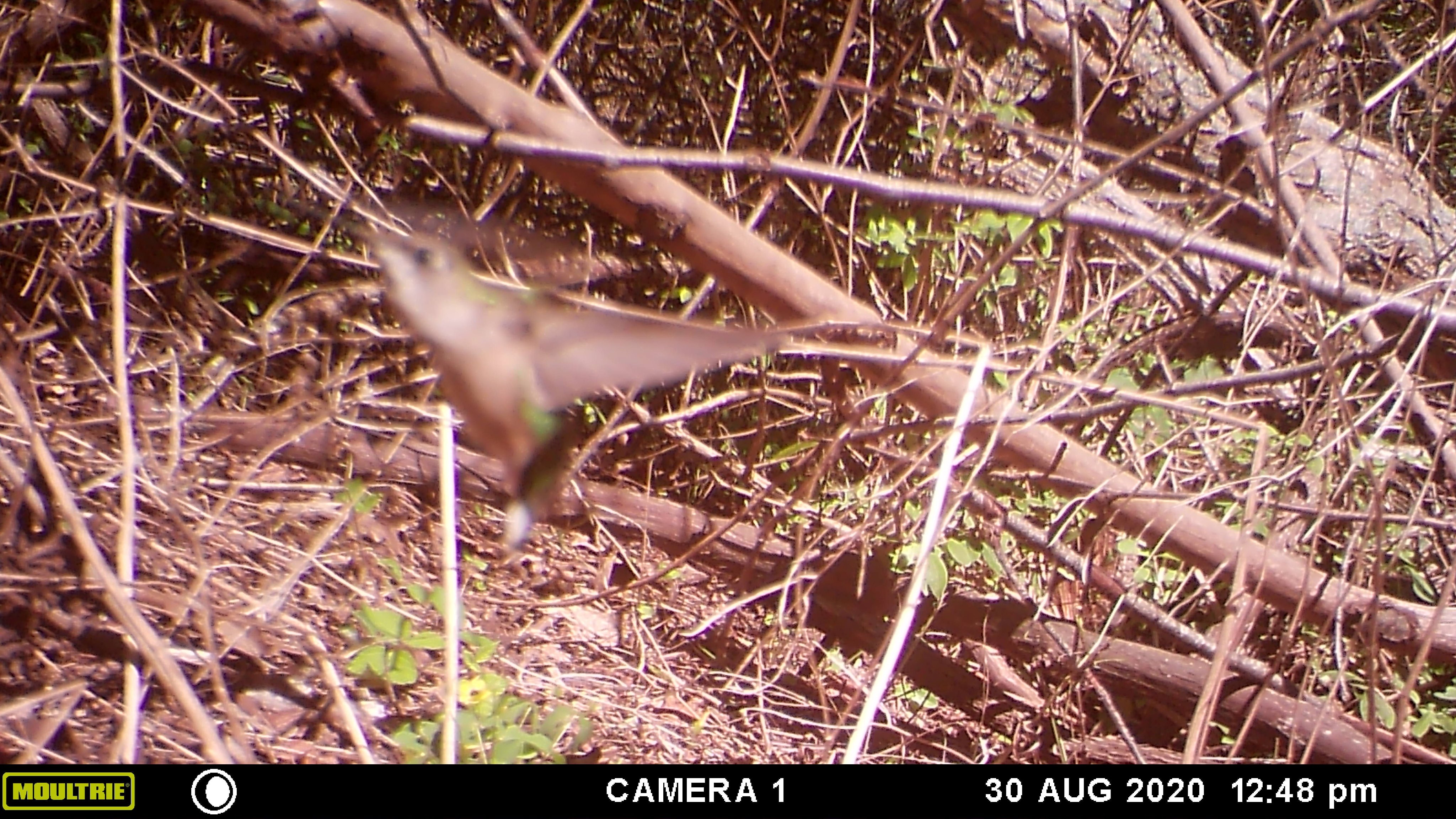Autonomous camera traps for insects provide a tool for long-term remote monitoring of insects. These systems bring together cameras, computer vision, and autonomous infrastructure such as solar panels, mini computers, and data telemetry to collect images of insects.
With increasing recognition of the importance of insects as the dominant component of almost all ecosystems, there are growing concerns that insect biodiversity has declined globally, with serious consequences for the ecosystem services on which we all depend.
Automated camera traps for insects offer one of the best practical and cost-effective solutions for more standardised monitoring of insects across the globe. However, to realise this we need interdisciplinary teams who can work together to develop the hardware systems, AI components, metadata standards, data analysis, and much more.
This WILDLABS group has been set up by people from around the world who have individually been tackling parts of this challenge and who believe we can do more by working together.
We hope you will become part of this group where we share our knowledge and expertise to advance this technology.
Check out Tom's Variety Hour talk for an introduction to this group.
Learn about Autonomous Camera Traps for Insects by checking out recordings of our webinar series:
- Hardware design of camera traps for moth monitoring
- Assessing the effectiveness of these autonomous systems in real-world settings, and comparing results with traditional monitoring methods
- Designing machine learning tools to process camera trap data automatically
- Developing automated camera systems for monitoring pollinators
- India-focused projects on insect monitoring
Meet the rest of the group and introduce yourself on our welcome thread - https://www.wildlabs.net/discussion/welcome-autonomous-camera-traps-insects-group
Group curators
- @tom_august
- | he/him
Computational ecologist with interests in computer vision, citizen science, open science, drones, acoustics, data viz, software engineering, public engagement



- 5 Resources
- 49 Discussions
- 5 Groups



- 7 Resources
- 2 Discussions
- 5 Groups
Orthoptera conservationist bioacoustics
- 2 Resources
- 0 Discussions
- 2 Groups



- 7 Resources
- 2 Discussions
- 5 Groups
- @yannickwurm
- | he/him
pollinators, technology, genomics, ants, evolution, https://wurmlab.com
- 0 Resources
- 0 Discussions
- 1 Groups
- @tom_august
- | he/him
Computational ecologist with interests in computer vision, citizen science, open science, drones, acoustics, data viz, software engineering, public engagement



- 5 Resources
- 49 Discussions
- 5 Groups
- @TheDataEnthusiastic
- | He/Him
Hi, I'm pursuing Master's in Data Science. And I want work help protect nature and wildlife.
- 0 Resources
- 0 Discussions
- 14 Groups
Research technician at the New Zealand Arthropod Collection. Interests include combining machine learning and computer vision in entomology.
- 0 Resources
- 0 Discussions
- 1 Groups
- @KPMcFarland
- | he, him, his
Conservation Biologist

- 0 Resources
- 4 Discussions
- 1 Groups
- @klwilson7
- | He/Him
- 0 Resources
- 0 Discussions
- 1 Groups
Octophin Digital
- 0 Resources
- 0 Discussions
- 1 Groups
- @womble
- | he/him
AI Researcher, mostly NLP, with 30+ years experience. Recently consulted for a company ding drone image analysis and Google Cloud
- 0 Resources
- 1 Discussions
- 6 Groups
- 0 Resources
- 0 Discussions
- 2 Groups
- @nlubcker
- | Dr
Results-Driven R&D Project Manager | Data scientist | I'm a versatile professional with 10 years of global experience in conservation and research.
- 0 Resources
- 1 Discussions
- 7 Groups
Do you have photos and videos of your conservation tech work? We want to include them in a conservation technology showcase video
17 May 2024
€2,000 travel grants are available for researchers interested in insect monitoring using automated cameras and computer vision
3 May 2024
Article
Read in detail about how to use The Inventory, our new living directory of conservation technology tools, organisations, and R&D projects.
1 May 2024
Article
The Inventory is your one-stop shop for conservation technology tools, organisations, and R&D projects. Start contributing to it now!
1 May 2024
The Smithsonian National Zoo & Conservation Biology Institute is seeking a Postdoctoral Research Fellow to help us integrate movement data & camera trap data with global conservation policy.
22 April 2024
We invite applications for the third Computer Vision for Ecology (CV4E) workshop, a three-week hands-on intensive course in CV targeted at graduate students, postdocs, early faculty, and junior researchers in Ecology...
12 February 2024
The primary focus of the research is to explore how red deer movements, space use, habitat selection and foraging behaviour change during the wolf recolonization process.
10 February 2024
Outstanding chance for a motivated and ambitious individual to enhance their current project support skills by engaging with a diverse array of exciting projects in the field of biodiversity science.
11 December 2023
Two-year postdoc in AI and remote sensing for citizen-science pollinator monitoring, at Aarhus University. The successful candidate will integrate our computational entomologist team to develop and deploy novel methods...
4 December 2023
Join the NightLife team where you'll blend entomology expertise with technological innovation using automated insect monitoring.
25 October 2023
Article
We are a group of students at UW-Madison who have built a working prototype for insect imaging. The light trap is aimed at photographing aquatic insects.
18 September 2023
Apply for funding (£500,000-£750,000) to develop software systems, which will help to improve biodiversity monitoring by automating the analysis of images and videos
12 July 2023
June 2024
event
November 2023
event
| Description | Activity | Replies | Groups | Updated |
|---|---|---|---|---|
| Thanks a lot for this detailed update on your project! It looks great! |
|
Autonomous Camera Traps for Insects | 6 months 3 weeks ago | |
| It depends on which scientists you talk to. I am an favor of just doing a timelapse and doing a post-processing sort afterwards. There's not much reason i can see for such motion... |
|
Autonomous Camera Traps for Insects | 6 months 4 weeks ago | |
| For anyone interested: the GBIF guide Best Practices for Managing and Publishing Camera Trap Data is still open for review and feedback until next week. More info can be found in... |
|
Autonomous Camera Traps for Insects, Camera Traps | 6 months 4 weeks ago | |
| This is super cool! Me and @Hubertszcz and @briannajohns and several others are all working towards some big biodiversity monitoring projects for a large conservation project here... |
|
AI for Conservation, Autonomous Camera Traps for Insects, Camera Traps | 8 months ago | |
| Plasticy substances like polyester can be slippery, so I imagine that's why cotton is most often used. White is good for color correction, while still reflecting light pretty well... |
|
Autonomous Camera Traps for Insects | 8 months 2 weeks ago | |
| I agree, this would be great for canopy work! |
|
Autonomous Camera Traps for Insects, Camera Traps, Emerging Tech, Marine Conservation | 9 months 2 weeks ago | |
| Hi Ross, Where exactly did you put the UV paint? Was it on the petals or the actual middle of the flowers? I would recommend switching from sugar paste to sugar water... |
+8
|
Camera Traps, Autonomous Camera Traps for Insects | 10 months ago | |
| Greetings, everyone! I'm thrilled to join this wonderful community. I work as a postdoctoral researcher at MeBioS KU Leuven having recently completed my PhD on "Optical insect... |
+11
|
Autonomous Camera Traps for Insects | 10 months ago | |
| A new COST action has been announced which will focus on the use of computer vision for monitoring insects.InsectAI will run for 4 years... |
|
AI for Conservation, Autonomous Camera Traps for Insects, Camera Traps | 10 months 3 weeks ago | |
| Hi there,I am also trying to get some visuals from wildlife cameras of insects visiting insect hotels. Was wondering if you had gained any further information on which cameras... |
|
Autonomous Camera Traps for Insects | 1 year ago | |
| Would be great to hear more. We found that the lepiLED was great! The ento mini did not attract as much, but if compensated with many nights of deployment it would probably work... |
|
Autonomous Camera Traps for Insects | 1 year ago | |
| Further to @htarold 's excellent suggestion, you can replace that entire PCB with a simple USB breakout board (e.g. USB micro attached below) by removing the red wire and... |
|
Autonomous Camera Traps for Insects | 1 year 1 month ago |
Solar panels in the tropics
26 January 2023 12:28am
27 January 2023 3:56pm
I've been intrigued by this topic. Thinking about ways you could use drones or some kind of launcher to deploy panels above the canopy. Sadly I live in the great white north so I have no way of testing any concepts. Maybe even some kind of solar balloon that could float above the canopy. Interesting design problem.
30 January 2023 10:10am
Hey Tom,
Since the output is dependent on a couple of factors such as the solar irradiance of the place, shading from the canopy, the type of solar panels (mono, poly or amorphous) and orientation of the panels, etc, I'd suggest you use a software to simulate the different parameters to get an almost accurate estimation of the output. You can try PVsyst- it has a free month trial (I haven't used it before but I hear it's great) or any other PV software :)
Apply Now: AI for Conservation Office Hours
18 January 2023 5:15pm
PhD position (m/f/d) in Insect Ecology and Conservation
9 January 2023 12:53pm
Cameras - pros and cons
21 September 2022 2:04pm
23 November 2022 2:58pm
Hi Liz, unfortunately you will still need a Raspberry Pi as host for the OAK-1 camera to reproduce our hardware setup. It's also possible to use another Linux-based system (e.g. Raspberry Pi alternatives), but I didn't test this myself and the setup process will be different to our documentation (and probably not so straightforward). I'm planning to publish the documentation website in the next weeks, but I can already send you detailed information about putting together the hardware if you are still interested.
7 December 2022 1:03am
Hello,
I'm working on a light weight light trap based on Bjerge et al 2021, however I opted to use an ArduCam 64mp (9152 x 6944 resolution). Designed for the pi specifically and at $60 it checks many of your criteria. I haven't put everything together yet so I can't speak for white balance and power usage, but the autofocus appears to work well from initial tests, and it is tiny.
Cheers,
Hubert
8 December 2022 4:06pm
Awesome! it would be great to hear how you get on, maybe you can share your results here when you have them. Is the camera only for the Pi? That could be a problem for scaling as Pis are quite hard to come by at the moment.
PhD - Sensory ecology of vespine wasps
8 December 2022 12:47pm
Easy-RIDER project Workshop IV: Pollinator monitoring recording
17 November 2022 2:39pm
In case you missed our webinar on Pollinator monitoring, here is the recording.
We had presentations from three teams who will be presenting their work in designing automated monitoring tools for flower-visiting insects, different ways for creating datasets for training machine learning algorithms for insect identification and how these new technologies can be integrated in traditional monitoring schemes. The talks were followed with a discussion session.
Implementation of video surveillance to quantify the predation rate
25 October 2022 4:26pm
3 November 2022 10:16am
RaspberryPi-maggedon!
We are having this problem too and it might be worthy of its own thread! The lack of RaspberryPis is a big problem and we are currently looking into alternatives. We haven't found one yet, but if we do I will let you know. @Max_Sitt might have some suggested alternatives for his system?
4 November 2022 10:54am
Hi Julien,
we are working with the Luxonis OAK-1 which can run lightweight detection models (e.g. YOLOv5n/s) directly on-device. However you will still need a host, for outdoor deployment Raspberry Pi (e.g. Zero 2 W) is perfect. But for testing you could also use another Linux-based system as host device or just connect it to e.g. your notebook. You can find more info in the Luxonis Docs.
Regarding the Raspberry Pi availability, this blog post from Jeff Geerling probably sums up the current situation pretty well. I hope in Q1 2023 the situation will get better, but at the moment nobody really knows for sure.
Workshop IV: Pollinator monitoring
21 October 2022 12:27pm
3 November 2022 8:18pm
4 November 2022 9:10am
New conservation tech articles from Mongabay
20 October 2022 7:45pm
Most interesting images / sightings 'caught on camera'
12 August 2022 2:50pm
26 August 2022 12:07pm
No - the trap was in their path and they just walked through it. I've now moved it to a place they can't go. The biggest threat to the moths is from pied currawongs. I schedule the trap so it shuts off at least two before sunrise to try to avoid them feasting on the larger insects.
29 August 2022 6:18pm
At first I was finding wings below the screen in the morning when I put our units out. So I put a game camera on the units to see what was feeding and when. I found three bird species, likely 3 individuals, quickly found it to be a good bird feeder- Song Sparrow (most frequent), House Wren, and this Tufted Titmouse. I changed my units to turn off about 1.5 hours before dawn and that worked! Nearly all the moths left the scene before the birds came to visit.
26 September 2022 10:43pm
My most prized camera trap image - a hummingbird caught on camera!
Counting insect density automatically with Intel RealSense D455?
31 August 2022 3:54pm
23 September 2022 12:06pm
Might be good to add this to the 'Automated Camera Traps for Insects' group
Emerging technologies revolutionise insect ecology and monitoring
16 September 2022 10:11am
Identify animal from Image
2 August 2022 1:37am
2 August 2022 2:54am
Hi Jitendra.
If they are still images, many people are using Megadetector to analyze their images. I'm not sure how it will do in species classification, but it can tell you if there are images of interest in the shots. Others here can probably give you more detailed instructions on how to use it to batch process camera trap images.
2 August 2022 10:24am
Have you considered creating a Kaggle competition? If you already have lots of images, and some that have been labelled, then this could be a good way to get people working on a solution
Workshop III: Designing machine learning tools to process camera trap data automatically
1 August 2022 10:35am
Workshop II: Assessing automated insect monitoring
1 August 2022 10:23am
Workshop I: Automated moth monitoring deployments
1 August 2022 10:12am


















































27 January 2023 1:23pm
Hi Tom,
I'm with Akiba, you have to test. A collaborator has deployed solar-augmented kit in secondary jungle and some of them got enough light, and others didn't, so it can work. The open circuit voltage of solar panels doesn't change a whole lot in dim light, but the current drops drastically. So you would choose an oversize panel of the same voltage (or a bit higher).
Thanks